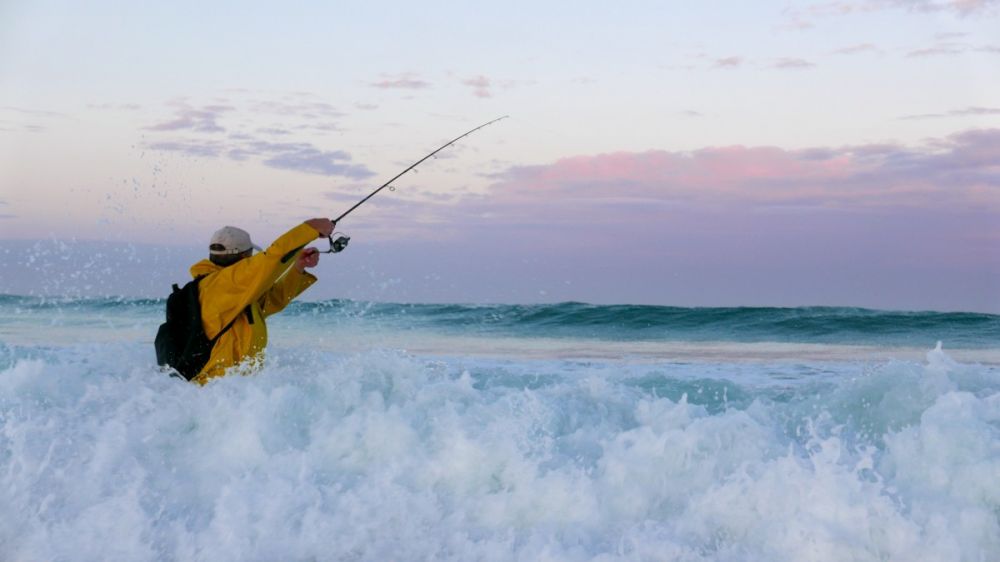
Read the article with FishingTheSpot: surfcasting
Keep an eye on this subject!
Thousands of species spotlights and techniques but also all the local information about your city!



Meet other anglers near you and share your fishing fishing trips, afoot or on a boat, at sea or in freshwater
See the fishing tripsSurfcasting

What is surfcasting?
Surfcasting is an English term that literally means "to throw in the wave". This technique, practiced from the edge, consists in sending your bait hook (i.e. weighted with bait) behind the waves. Ideally, it is a matter of launching your line further than the third wave (behind the rollers, about a hundred meters away) to reach the areas where the most beautiful catches are found. Some experienced fishermen manage to propel their lead to more than 160 m offshore, however, fishing from 20 m from the shore can already give good results! If this technique is particularly recreational fishing, it is nevertheless complex: it requires specific equipment, a good knowledge of the tides, a certain fingering and finally power to make beautiful throws.
Where and when to practice the surfcasting technique?
In surfcasting, all stations are good, but some are better than others: bay exits, pits, estuaries, oyster beds, rocks, and wrecks are particularly good.
The interest is to look for places where the relief of the bottom varies, these places are perfect refuge areas for small fish and hunting areas for larger ones.
Surfcasting fishing is, like any other sea fishing, subject to many conditions (climate, tide, wind speed, etc.). This technique allows such a diversity of fish to be caught that the times of year and day can sometimes be completely different from one species to another. However, twilight and early night are often the best times to practice surfcasting.
Which species to fish in surfcasting?
Eel - plaice - courbine - mullet - sar - wolf - sole - turbot - flounder - sea bass - cod - whiting - mullet - plaice - flounder - dab - sea bream - lean - ray - marbled - cod - pout - place - orphy etc.
What are the natural baits used for surfcasting?
The bar is caught with chipirons or sand eels. For a beautiful sea bream, prefer small crabs. And finally, concerning the sar, it is with large worms or mussel meat that you will increase your chances of catching it.
In general, many baits are available for surfcasting fishing:
- Worms: arenicola, gravel,
- Crustaceans: crab, shrimp;
- Mollusks: knife, shell, squid, clam, clam, soft-shell clam, cuttlefish, squid;
- Lively: sand eel, shell, sardines, mackerel, smelt.
It should be noted that some baits are however more effective depending on the species: worms attract predators and flatfish while small fish and cephalopods catch the largest predators (which is why they are very often used by fishermen in surfcasting).
What equipment should I use to fish in surfcasting?
Fishing in surfcasting is not something you can improvise. It is necessary to have robust equipment adapted to this technique in particular because repeated sand attacks, wave and wind power put your equipment to the test.
The basic kit for the fisherman in surfcasting is composed as follows:
- A telescopic or press-in rod of at least 4 meters composite fiberglass and/or carbon and with an average power of 90-200 grams so that the line does not suffer from wave action;
- A reel that can contain 200 or 300 meters of fluorocarbon or nylon (monofilament) yarn without memory;
- A lead weighing more than 40 g and up to 200 g depending on whether you choose light or heavy surfcasting, itinerant or pendulum surfcasting (the most common are grapple weights so that the setting remains anchored to the bottom of the water even if there are strong currents and large waves);
- A pole or tripod to support the rod and keep it upright;
- Accessories for the setting of the lead: rolling or stapled swivels, colored and phosphorescent beads, sleeves, stem clips etc.


